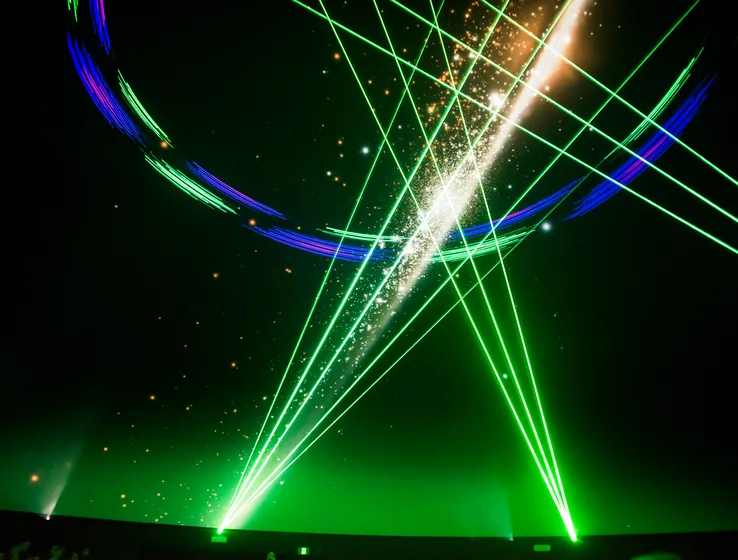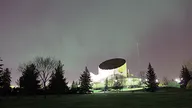The Visible Planets
Mercury is not visible this month from our latitude, however southern hemisphere observers will get a good view of Mercury after sunset this month.
Venus rises along the eastern horizon about 2.5 hours before sunrise, appearing as the brightest object in that part of the sky (other than the Moon at times). Look for the waning crescent Moon to join Venus in that part of the sky on the mornings of October 19 and 20.
Mars is not visible this month from our latitude. It is lost in the light of the setting Sun.
Jupiter rises above the northeast horizon by midnight early in the month and by 10:30 pm at the end of the month. It is found amongst the stars of the constellation of Gemini, the twins, and will be seen just below the bright stars of Castor and Pollux of the constellation. On the night October 13, look for Jupiter near the last quarter Moon. Jupiter will be at its point of opposition in early January 2026, so telescopic views of Jupiter are getting better daily!
Saturn is seen above the eastern horizon at sunset and is found in the eastern region of the constellation of Aquarius, the water bearer. As the night goes on Saturn moves higher into the southern sky, appearing highest (about 33 degrees) in the south around 1:00 a.m. MDT early in the month and by 11:00 pm MDT by the end of the month. On the night of October 5, look for Saturn below the waxing gibbous Moon.
Moon Phases
October 6 Full Moon (The Hunter’s Moon)
October 13 Last Quarter Moon
October 21 New Moon
October 29 First Quarter Moon
Special Events
International Space Station (ISS) Observable Passes
During the month of October there will be early morning, pre-sunrise passes of the ISS starting around October 17 through until the end of the month. Exact times of these passages for your location can be found by visiting the website http://www.heavens-above.com or by using satellite tracking smart phone apps like Sputnik or Spot-the-Station.
Comet C/2025 A6 (Comet Lemmon) can now be see in our evening sky from sunset to sunrise. From mid-October to the end of October, comet Lemmon can be seen below the handle stars of the Big Dipper, moving through the constellations of Canes Venatici and Bootes over the rest of the month.
October 4 Sputnik launched into space in 1957 (68 years ago)
October 4 International Observe the Moon Night
October 4 Europa and Io shadow transits on Jupiter from midnight to 3:00 am MDT from our location.
October 4-10 World Space Week!
October 5 Marc Garneau, Canada’s first astronaut, launched into space 41 years ago on Shuttle Mission 41-G. Marc Garneau passed away earlier this year on June 4. He is sadly missed.
October 5/6 Last transit of Titan’s shadow on Saturn for 15 years! Occurs between 10:34 pm to 00:37
October 6 Royal Astronomical Society of Canada (RASC) Edmonton Centre meeting
Live in the Zeidler Dome at TWOSE and presented virtually through Zoom.
7:30 pm – 9:30 pm
Free for anyone to attend.
See http://www.edmontonrasc.com for more details.
October 9 Look for the Moon by the Pleiades star cluster
October 13 Thanksgiving Day
October 17-26 Jasper Dark Sky Festival See https://jasperdarksky.travel/ for more details of the event.
TWOSE staff will be at the event on Friday, Oct. 24 & Saturday, Oct. 25.
October 20/21 Orionid meteor shower peaks in the evening hours.
October 29 Perihelion date of comet and interstellar object 3I/ATLAS (C/2025 N1).
The comet will be 203 million km from the Sun. The comet will not be visible from Earth at this time.
October 31 Happy Halloween!





